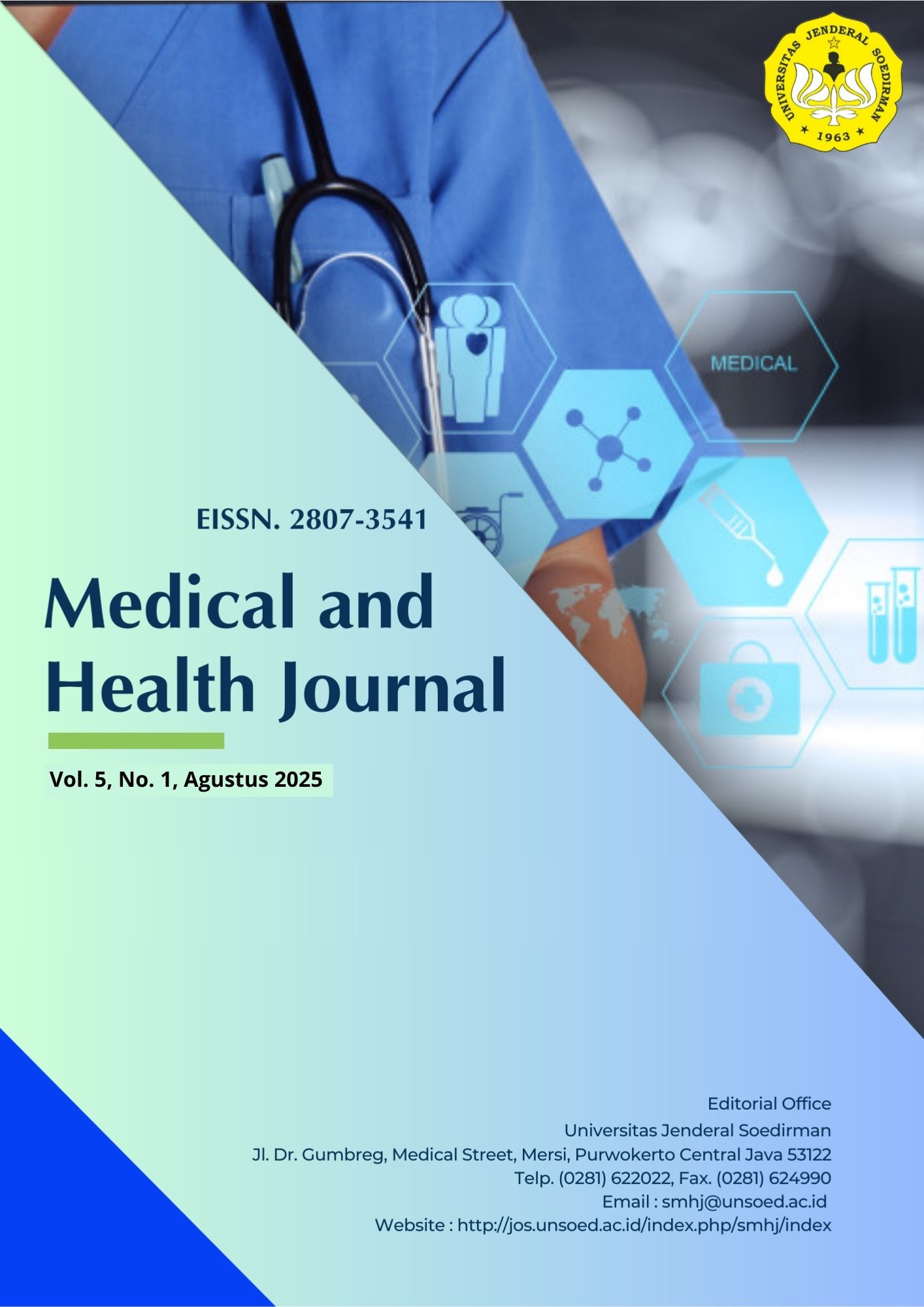Relationship Between Results of The Gajah Mada Stroke Algorithm Assessment and Type of Stroke Based On Non Contrast Head CT-Scan Results at Wijayakusuma Purwokerto Hospital
Abstract
Background: Stroke is a neurological deficit condition that often results in serious consequences dan requires rapid dan accurate diagnosis. Objective: This study aims to determine the relationship between the results of the Gajah Mada Stroke Algorithm assessment dan the type of stroke detected through non-contrast head CT scans at RST Wijayakusuma Purwokerto. Methodology: The research employed an observational approach, collecting data from 32 patients presenting with acute stroke symptoms from June to July 2024. Data were gathered through patient anamnesis, physical examinations, dan non-contrast head CT-scan results. Results: The findings indicate that ischemic stroke is the most prevalent type, accounting for 84.4% of cases based on non-contrast head CT scans. The Gajah Mada Stroke Algorithm also identified the majority of cases as ischemic stroke, with 59.4% of cases. Bivariate analysis using Fisher's Exact Test revealed a p-value of 0.006, demonstrating a significant relationship between the Gajah Mada Stroke Algorithm assessment dan CT-scan results. Conclusion: The Gajah Mada Stroke Algorithm has proven effeCTive in distinguishing between types of stroke. This study supports the use of the algorithm as a clinical diagnostic tool in stroke management.






